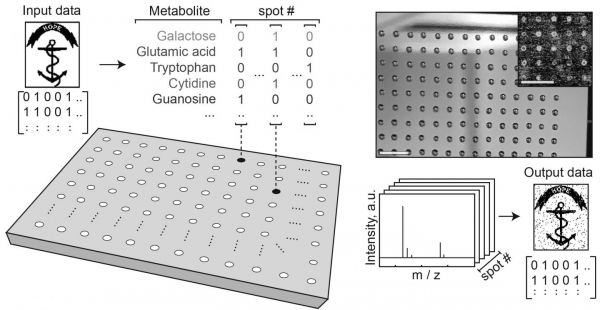DNA molecules are well known as carriers of huge amounts of biological information, and there is growing interest in using DNA in engineered data storage devices that can hold vastly more data than our current hard drives.
DNA molecules are well known as carriers of huge amounts of biological information, and there is growing interest in using DNA in engineered data storage devices that can hold vastly more data than our current hard drives. But new research shows that DNA isn’t the only game in town when it comes to molecular data storage.
A study led by Brown University researchers shows that it’s possible to store and retrieve data stored in artificial metabolomes — arrays of liquid mixtures containing sugars, amino acids and other types of small molecules. For a paper published in the journal PLOS ONE, the researchers showed that they could encode kilobyte-scale image files into metabolite solutions and read the information back out again.
“This is a proof-of-concept that we hope makes people think about using wider ranges of molecules to store information,” said Jacob Rosenstein, a professor in Brown’s School of Engineering and senior author of the study. “In some situations, small molecules like the ones we used here can have even greater information density than DNA.”
Another potential advantage, Rosenstein says, stems from the fact that many metabolites can react with each other to form new compounds. That creates the potential for molecular systems that not only store data, but also manipulate it — performing computations within metabolite mixtures.
Read more at Brown University
Image: In a step toward molecular storage systems that could hold vast amounts of data in tiny spaces, Brown University researchers have shown it's possible to store image files in solutions of common biological small molecules. (Credit: Jacob Rosenstein et. al.)




